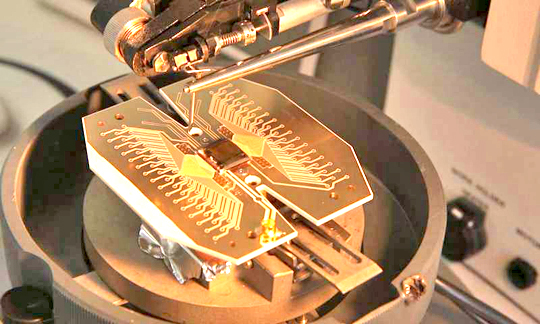London, Feb 2: Scientists have unveiled the first ever practical blueprint to construct a large scale quantum computer, the most powerful computer on Earth that could revolutionise industry, science, medicine and commerce.

The work by scientists, including those from University of Sussex in the UK and Google, features the actual industrial blueprint to construct such a large-scale machine, more powerful in solving certain problems than any computer ever constructed before.
Once built, the computer's capabilities mean it would have the potential to answer many questions in science; create new, lifesaving medicines and solve the most mind-boggling scientific problems, researchers said.
It could also unravel the yet unknown mysteries of the furthest reaches of deepest space and solve some problems that an ordinary computer would take billions of years to compute.
The work features a new invention permitting actual quantum bits to be transmitted between individual quantum computing modules in order to obtain a fully modular large-scale machine capable of reaching nearly arbitrary large computational processing powers.
Previously, scientists had proposed using fibre optic connections to connect individual computer modules.
The invention introduces connections created by electric fields that allow charged atoms (ions) to be transported from one module to another.
The approach allows 100,000 times faster connection speeds between individual quantum computing modules compared to current state-of-the-art fibre link technology.
"For many years, people said that it was completely impossible to construct an actual quantum computer. With our work we have not only shown that it can be done but now we are delivering a nuts and bolts construction plan to build an actual large-scale machine," said Professor Winfried Hensinger from University of Sussex, who is leading the research.
"It was most important to us to highlight the substantial technical challenges as well as to provide practical engineering solutions," said Bjoern Lekitsch, also from the University of Sussex.
As a next step, the team will construct a prototype quantum computer, based on this design.
"The availability of a universal quantum computer may have a fundamental impact on society as a whole," Hensinger said.
The computer's possibilities for solving, explaining or developing could be endless. However, its size will be anything but small.
The machine is expected to fill a large building, consisting of sophisticated vacuum apparatus featuring integrated quantum computing silicon microchips that hold individual charged atoms (ions) using electric fields.
The blueprint to develop such computers has been made public to ensure scientists throughout the world can collaborate and further develop this brilliant, ground-breaking technology as well as to encourage industrial exploitation.





Comments
Add new comment